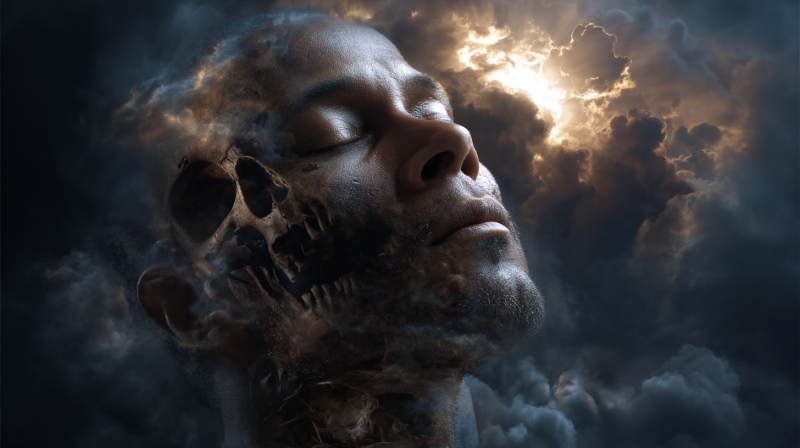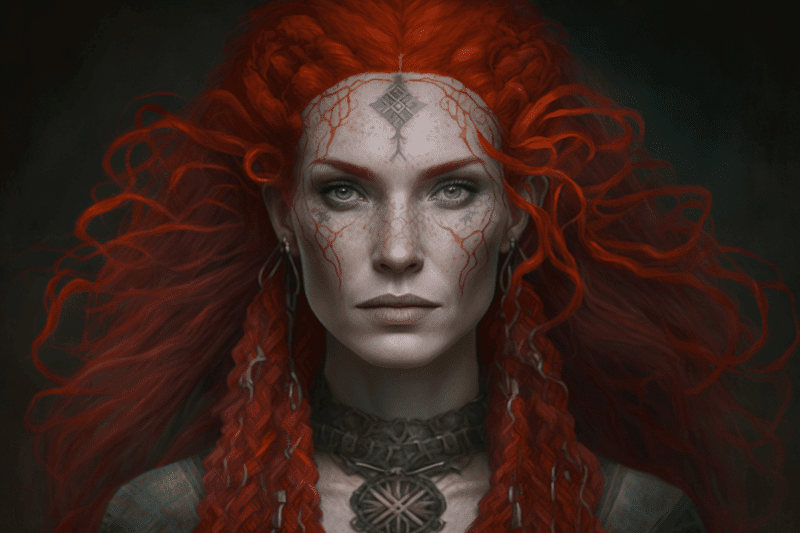People can talk to Bondye, the highest Voodoo god, through spirits called loa, which are the main celestial beings in Vodun. The Ghede, Petro, and Radha families are just a few of the many families that include the loa, or lwa. Most people think of them as lesser gods, with Bondye, the creator, being the most important god.
Many of the loa have parallels in Catholicism. This is because enslaved people in Haiti and Louisiana mixed Catholic saints with their own Loa beliefs. Voodoo mambos or houngans summon them through ritual, and before asking for help, they are first given food and drink offerings. The orishas are used in some traditional African faiths in place of or as an alternative to the loa. Orishas are spirits that look like people. They are part of the Yoruba religion.
Bondye
In the Voodoo faith, Bondye is the creator god, and the loa are his followers. The loa are the link between humans and Bondye, whose presence humans can’t understand. Spiritual work is done with the loa because Bondye is essentially unknown to people and doesn’t interfere in the affairs of mortals.
Papa Legba
The crossroads’ loa, Papa Legba, acts as a bridge between the physical world and the spiritual one. Legba has changed significantly since his African roots. He is sometimes shown with a huge, erect phallus as a fertility god. In other traditions, he is known as the trickster or the protector of children.
In both Haitian and New Orleans voodoo, Papa Legba takes on a variety of guises. He is sometimes shown as an older guy with an old straw hat or ragged clothing since he is associated with the colors red and black. Papa Legba uses a cane to walk and has a puppy by his side.
Maman Brigitte
Maman Brigitte is a loa in Haitian Voodoo who is connected to death and the afterlife. She frequently takes the form of a black rooster and is the consort of Baron Samedi.
Maman Brigitte’s ancestry has been theorized to come from Brigid, the Celtic goddess of domestic life and hearth fires; proponents of this hypothesis assert that Maman Brigitte must have traveled to Haiti with Scottish and Irish indentured servants when they left their native countries. The fact that Maman Brigitte frequently appears as a woman with fair skin and red hair supports this theory.
Baron Samedi
Baron Samedi, the spouse of Maman Brigitte, is revered and feared as the custodian of cemeteries and is known as the god of death. He frequently presents as a skeleton, donning a top hat, formal tails, and dark spectacles. Only Baron Samedi is capable of escorting a soul into the realm of the dead, making him a god of both resurrection and death.
He is known for acting in strange and rude ways, using bad language, and having affairs with other women. If the victim is willing to pay him a fee, Baron Samedi can even heal a fatal wound on long-dead ancestors. As the head of the Guede, a family of loa who deal with the dead, Baron Samedi has ties to strong magic.
Erzulie
The essence of femininity and womanhood is Erzulie, the goddess of beauty and love. She can be seen in a variety of roles, such as Erzulie Dantr and Mambo Erzulie Fréda Dahomey. Similar to the Christian Lady of Sorrows, Erzulie frequently laments the things she cannot have and occasionally exits ceremonies in tears. She is sometimes shown as a black Madonna and other times as a wealthy, light-skinned woman of mixed races who is accessorized with opulent attire and jewels. You can talk to her and her Loa family about parenting and strong female sexuality, among other things.
Ogun
Ogun, a god connected with warriors, blacksmiths, and the wheels of justice, is one of the orishas who enter Voodoo from the Yoruba belief system. It is thought that offering meat to Ogun can grant you the good fortune of a successful hunt.
Vodou practitioners offer male animals, like roosters and dogs, as sacrifices to Ogun and talk to him about war and conflict. He is identifiable by a machete or an iron knife, and he enjoys fine rum and lovely women.
Damballah
One of the most significant loas in both New Orleans and Haitian voodoo is the damballah. He is a creator who helped the god Bondye make the world. He is represented by a big snake. He is the guardian of knowledge, wisdom, and healing magic. His coils molded the heavens and the earth. It’s interesting that he is linked to Saint Patrick, who is credited with driving the snakes from Ireland. His lover is Erzulie.
Damballah is a force that never stops moving across land and water. It represents the love of life. His female counterpart Ayida-Weddo creates the rainbow.
Oshun
Oshun, one of the Orishas, is a goddess associated with water, rivers, and streams. Along with love and pleasure, she is linked to beauty and sexuality. She is a common figure in Ifa and Yoruba belief systems, and those who follow her make sacrifices near riverbanks as a sign of their devotion. Oshun is connected to riches; thus, people who ask her for help may be blessed with bounty and abundance.
Orange and golden yellow, along with coral and green, are among Oshun’s hues. Her offerings can include pumpkins, honey, and freshly ground cinnamon. The bedroom is where many of her devotees keep their altars to Oshun.


